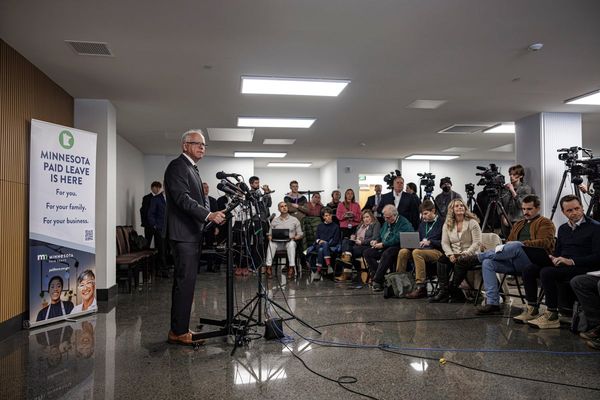
Australia’s economic growth slowed at an annual pace in the June quarter as headwinds from interest rates and a faltering post-Covid recovery in China took their toll. In per-capita terms, growth was negative for the second quarter in a row.
The country’s gross domestic product rose 2.1% in April-June compared to the same period 12 months earlier. That contrasted with a revised 2.4% annual rate in the March quarter, the Australian Bureau of Statistics reported on Wednesday.
On a quarterly basis, the June quarter GDP expanded 0.4% compared with a revised 0.4% in the previous three months.
Economists had expected GDP growth to come in at an annual rate of 1.8% and 0.4% for the quarter.
The GDP figures were bolstered by a rapid increase in Australia’s population. Excluding that factor, per-capita growth in the June quarter was a decline of 0.3% for the second quarter in a row, suggesting a technical per-capita recession.
The release of the national accounts data comes a day after the Reserve Bank left its key interest rate unchanged at 4.1% for a third consecutive month. The central bank said the recent data was consistent with inflation returning to its 2–3% target range “with output and employment continuing to grow”.
The 12 interest rate rises between May 2022 and June 2023 is providing a “painful squeeze” on many households, the RBA said on Tuesday. China’s weak economic rebound this year – caused in part by the deflating of a property price bubble – was among the big uncertainties for Australia and more globally, the bank said.
The market’s immediate reaction to the national accounts was limited. The Australian dollar dipped to a fresh 10-month low of 63.59 US cents before rebounding to 63.8 US cents. Stocks, already down about 0.4% for the day, have since doubled those losses.
The main contributor to the June quarter numbers was a boost to net exports, thanks in large part to a 12.1% jump in service exports. Inbound travel services jumped 18.5% as tourists flocked in while the number of international students also rose.
Increased investment by companies also rose, helping to counter a drop in inventories held by private firms, the ABS said.
For the June quarter itself, trade and investment countered the drop in inventories (while other components were mostly flat). pic.twitter.com/yiKIquH65C
— @phannam@mastodon.green (@p_hannam) September 6, 2023
Over the 12 months to June, the economy expanded 3.4%, down slightly from the 3.7% in 2021-22. Those years compared with a 0.1% contraction in 2019-20 and 2.1% in 2020-21, the years most disrupted by Covid-19.
“While we have been clear and upfront that we expect our economy to slow considerably over the next year, we enter this period of uncertainty from an enviable position,” the federal treasurer, Jim Chalmers, said.
“The Australian economy grew faster than most of the major advanced economies through the year to June quarter 2023 – faster than Germany, the United Kingdom, France, Canada and Italy.”
Economists at Barclays, though, noted the year-on-year pace of 2.1% was the weakest since the final three months of 2020, revealing “a significant slowdown versus the relatively strong 2022, as headwinds to growth build”.
They said the economy expanded an annual pace of 2.3% in the first half of 2023, a pace that they predict will slow to 0.6% in the second half.
“The decline in discretionary consumption for two straight quarters shows that pent-up demand is no longer a factor driving the Australian economy,” Barclays economists Rahul Bajoria and Shreya Sodhani said.
“Savings have fallen and as migration drives softer income growth – with capacity constraints in the labour market likely easing into the end of the year and 2024 – household consumption will likely further be squeezed,” they said.
David Bassanese, the chief economist at BetaShares, said the GDP figures were unlikely to change the Reserve Bank’s outlook on interest rates. The next move is likely to be rate cuts, starting by mid-2024, he said.
“[H]ousehold consumer spending grew by a mere 0.1% in the June quarter, to be up only 1.5% over the past year,” Bassanese said, with higher borrowing costs denting demand.
Shoring-up the economy was a 5.5% expansion in public demand for the quarter, as large-scale transport, health and education projects get going. However, the confluence of such public works was likely to contributing to labour and material shortages, “crowding out” housing construction and adding to inflationary pressures, Bassanese said.
• This article was amended on 7 September 2023. An earlier version contained an error regarding the number of consecutive quarters of negative per-capita growth.







